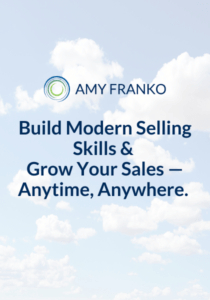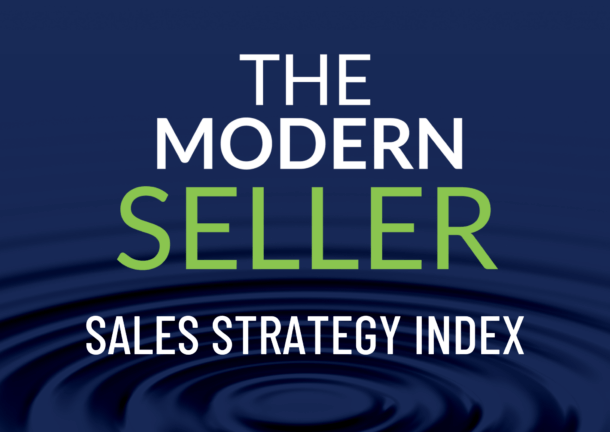"*" indicates required fields
They say the road to success is always under construction. In the world of sales, that’s definitely the case.
How can we keep driving forward? Sales enablement and effectiveness are the engine of a sales organization, and when executed well, they create an environment of productivity and success. Though they are often described interchangeably and do crossover, sales enablement and effectiveness could have different applications depending on the organization.
Let’s start by laying a foundation of understanding of these terms. Below are definitions of what it means to create an environment of enablement and effectiveness:
- Enable: To make able, to make ready; to equip; to give competence, means, or ability; to empower
- Effect: The state of being operational; operation or execution; accomplishment or fulfillment
I think of enablement as my highway, helping me get to the desired destination. Enablement is a system, providing multiple ways to reach a destination. The design quality and the upkeep of the system ultimately help to determine the quality of my travel and the roads I may take to get there.
On the flip side, I think of personal effectiveness as the car I drive on that freeway, also helping me get to the desired destination. As the driver, my actions and my decisions, the tools I have at my disposal, and how well I care for my vehicle, all combine to determine how quickly and productively I arrive at my destination.
It’s the combination of enablement (the system design) and effectiveness (individual actions + tools) that create success. To help you navigate your road to success, consider leveraging these critical organizational sales enablement elements and my top personal productivity and effectiveness tools.
Critical Enablement Elements
The enablement highway requires a variety of elements for optimal design and overall functioning: talent selection and development, sales incentives and compensation, overall sales process design, and technology to name a few.
These systemic elements then support the overall sales strategy, as well as sales leadership and sales force activities. The critical tie for success? A close connection to the business, to sales leaders and teams, creates the environment for enablement to have a direct positive impact on productivity and results.
While there are many enablement elements that support the system, I’ll focus on three that I believe to be crucial to the smooth functioning of the highway system:
- Sales Process Design and Support: A consistent sales process helps provide the right direction on the freeway. While a sale itself may have varying levels of complexity, the process should be as systematic as possible. A strong sales process considers the customer (such as B2B, B2C, or public sector), the type of sale (consultative or transactional), average sale cycles, and pipeline management principles. It also provides direction on the various stages of the customer relationship, from beginning (prospective customers) through maturity (ongoing relationship management and sales opportunities).
- Learning Strategy and Programs: Does the sales enablement function incorporate a learning strategy and programs that effectively teach to the required skills and competencies of the sales process? This is a combination of formal and informal, in-person and technology-based, plus point-in-time performance support and coaching. The connection between sales learning activities and the sales process must be there, or the sales process won’t be consistently applied or measured at the individual level.
- Coaching: Coaching of the sales leader could be the biggest missing link in most organizations. The coaching model created by the sales enablement function should connect the application of required skills from the various learning programs and the sales process. While sales enablement practitioners may coach individual sellers, the biggest leverage point is empowering sales leaders to take on a larger coaching role with their teams. When this happens, it helps the sales leader to step out of day-to-day deal managing, and truly helping their team members reach their goals.
My Favorite Effectiveness and Productivity Tools
While a robust CRM is typically on the list, I won’t include it here. I believe that’s a given – a system with simplicity and integration that allows the sales force to focus on productive customer-facing activities. A CRM is part sales enablement and part personal effectiveness, because it’s the combination of its design (the system) plus usage and data quality (individual actions) that determine its relevance and impact on sales results.
There are SO MANY out there – it becomes important to find the tools that work for you, and it can take some experimentation to get there. Below are some of the tools that I’ve personally found to improve my effectiveness and productivity in the sales profession. I’m including some other tool listings for you as well.
Organizational Tools: I perform at a much higher level and with less stress when I’m organized and not keeping a mental checklist.
- Evernote: A tool for organizing client information, reminders, lists, and my own personal development content into easy-to-use notebooks.
- Dropbox: My go-to cloud storage tool for working with my team in the office or on the road; it allows for easy collaboration, syncing, and alerting on documents.
- Tracking Sheet: Decidedly low tech! I keep a good old-fashioned paper tracking sheet for my customer-facing activities. If you use a tool like this, you’ll want to plan for entering pertinent information into your CRM.
Research Tools: Our customers expect us to be well researched about them and their organizations. These tools help me shave time on research and meeting preparation.
- LinkedIn: My #1 tool for learning more about and connecting with industry thought leaders, colleagues, customers, and potential clients. I’ve personally found that investing in their premium option has helped me get further in my research and search efforts.
- Google Alerts: I set up weekly Google alerts on my top customers and prospective clients, allowing me to stay on top of trends affecting their organizations or industries.
Mindset and Decision Making: In the sales profession, our mindset comes before all else. The right mindset keeps us motivated (especially when things are tough), and helps us make better decisions about where to invest our time.
- Stop, Breathe, Think: A mindfulness and meditation app that allows me to check in each day, and then select short meditation tracks to help me set the right mindset for the day. Many of the tracks are 5 minutes or less.
- Daily Planning Tool: Another low-tech tool I devised to help me focus on my top priorities each day. My daily goal is to tackle early in the day the top business development and sales activities that move my sales opportunities forward. This tool also helps me to time block and batch activities for greater productivity.
- Win Streak: An app to help track daily successes, or “wins.” Very helpful for staying motivated and engaged on longer term goals, as well as celebrating small milestones along the way.
Fitness: I included a few of my favorite fitness tools, because fitness is a huge part of how I stay productive.
- Nike+ Training Club: A free app with various video-based cardio and strength routines, all tailored to different fitness levels and goals. Many of the routines don’t require weights or equipment. This is perfect for wellness while I travel!
- Yoga Studio: A variety of yoga routines, customizable to fitness levels. Another great option for staying well on the road.
- Sleep Cycle: Sleep is crucial to overall productivity, and I know that there are many times I don’t get enough sleep, or quality sleep. Sleep Cycle is an intelligent alarm clock, waking you up at the optimal time each morning, helping you to feel better rested.


 Our Strategic Selling signature sales training program is now available online. This online sales learning program is ideal for professional services and B2B sales. Get started with 2 free lessons.
Our Strategic Selling signature sales training program is now available online. This online sales learning program is ideal for professional services and B2B sales. Get started with 2 free lessons.